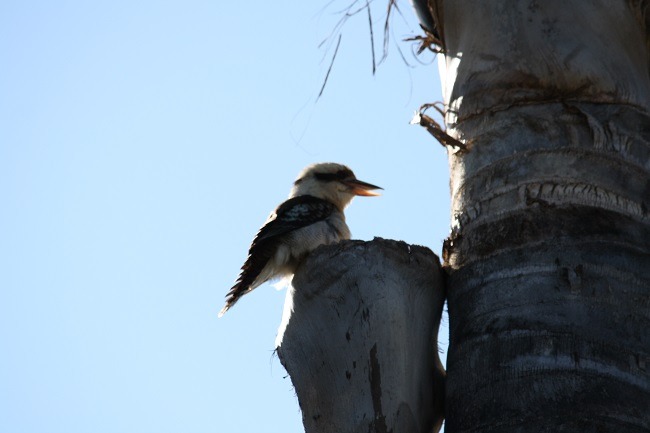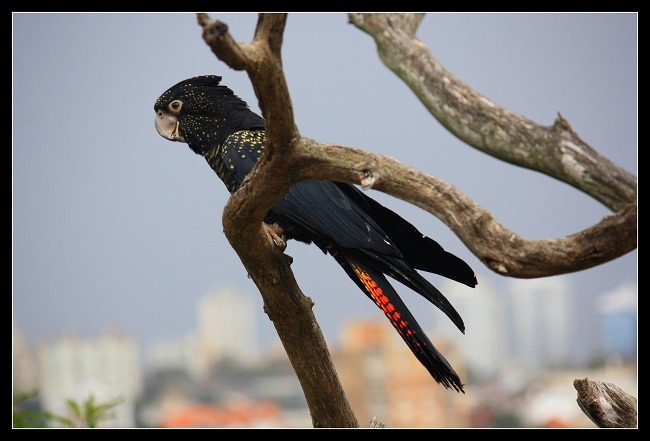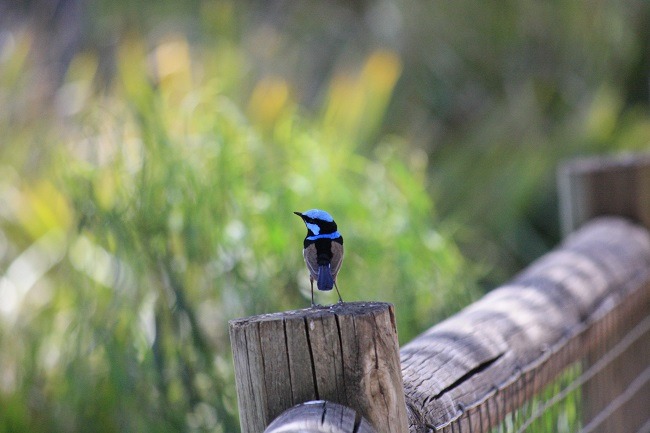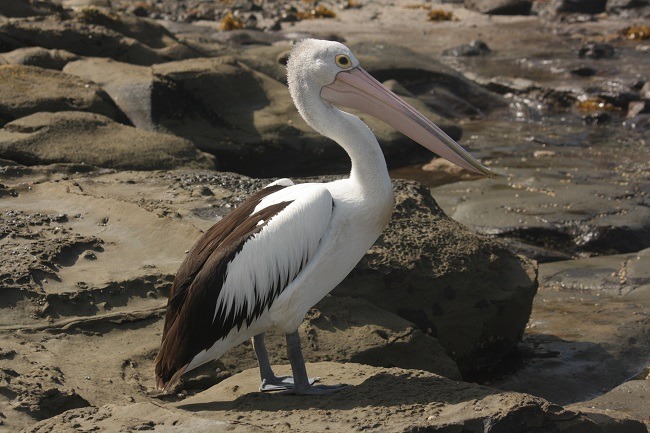Photo Diary of Australian Native Birds
Australia boasts various colourful birds, each exhibiting unique beauty and charm. As an avid admirer of these native species, I dedicate this post to showcasing their stunning appearances and remarkable characteristics. From the striking hues of the Eastern Rosella to the vivid plumage of the Rainbow Lorikeet, the diversity of Australian birds is truly captivating.
If you share a passion for birds and are eager to learn more about Australia’s avian residents, I recommend visiting the “Bird Finder” resource. This platform offers valuable information about native species, habitats, and behaviours, making it an excellent starting point for bird enthusiasts.
Whether you’re interested in birdwatching or simply appreciate their beauty, exploring Australian birds can be a rewarding experience. Immerse yourself in the colourful world of these feathered wonders and discover the charm they bring to Australia’s landscapes.
This article may contain affiliate links, meaning if you decide to purchase via my links, I may earn a commission at no additional cost to you. For complete information, please see our affiliate disclaimer here.
Page Contents
Photo Diary of Australian Native Birds
Australian Magpie
The Australian magpie is a striking medium-sized bird with distinct black and white plumage. Renowned for their intelligence, these birds are believed to remember human faces, showcasing an impressive cognitive ability. Australian magpies can mimic the calls of over 30 native and introduced bird species and other sounds, including telephone rings, sirens, and dog barks. How fascinating is that?
These birds are also known for their strong pair bonds. Magpies often mate for life, displaying a commitment that adds depth to their social behaviour. However, it’s important to exercise caution around Australian magpies, especially during their breeding season from August to October. Males can become aggressive and may swoop at perceived threats, including humans. This behaviour has led to a complex relationship between people and magpies, often described as love-hate.
Check out the article in The New York Times for a deeper insight into this intriguing dynamic. Understanding these fascinating creatures enhances our appreciation of the unique wildlife in Australia and their interactions with humans.
Galah
The galah is often regarded as one of the cutest birds in Australia. This charming pink and grey bird is a cockatoo family member known for its playful and friendly nature. “Galah” comes from the Yuwaalaraay Aboriginal word “gilaa.” These birds are typically found in large flocks and are often seen foraging on the ground, adding to their endearing appearance.
Despite the slang usage of “galah” in Australia, which refers to a fool or clown, these birds are anything but foolish. Galahs are highly intelligent and adaptable, showcasing remarkable social behaviours. They communicate effectively within their flocks and are known for their playful antics, which can include acrobatics and vocal mimicry. Their intelligence enables them to thrive in various environments, making them a common sight in urban and rural areas.
Whether perched on a tree branch or searching for food on the ground, galahs bring joy and vibrancy to the Australian landscape. Their striking colours and engaging behaviour make them a favourite among birdwatchers and nature enthusiasts, highlighting their unique charm in the avian world.
There is a sculpture in Sydney called Forgotten Songs, dedicated to all the birds lost because of the concrete jungle.
Kookaburra
The Australian Kingfisher, commonly known as the kookaburra, is a native bird found in Australia and New Guinea. Renowned for its distinctive call that resembles human laughter, the kookaburra is a true icon of the Australian bush. These birds are carnivorous, primarily feeding on mice, small birds, reptiles, and occasionally small snakes.

A few years ago, I encountered a stunning kookaburra perched gracefully on a branch during my visit to Green Patch in Jervis Bay, New South Wales. The bird captivated me with its charming presence and provided a delightful show, posing effortlessly for me. Watching it in its natural habitat was a remarkable experience, highlighting the kookaburra’s playful and curious nature.
Did you know that Jervis Bay has amazing dive sites? I dived at the Docks, one of them.
Kookaburras are famous for their laughter-like calls and their role in Australian folklore and culture. They symbolise the spirit of the bush and are often featured in stories and songs. Spotting a kookaburra is always a treat, as they add vibrancy and character to the landscapes they inhabit. The kookaburra enchants locals and visitors in the wild or urban areas with its charm and unique personality.
Rosella
The rosella is a colourful parrot native to Australia, known for its vibrant plumage and engaging personality. These birds primarily feed on seeds and fruits, making them an important part of their ecosystem. Rosellas are also fond of bathing in puddles of water, often seen splashing about, which adds to their playful behaviour.
Six recognised species of rosellas exist, each exhibiting unique colours and patterns that make them stand out in their natural habitats. Their striking appearance and charming demeanour make them a favourite among birdwatchers and nature enthusiasts.
Similar to magpies, rosellas are known to mate for life, forming strong bonds with their partners. This lifelong commitment adds to the complexity of their social structures and highlights their intelligence and emotional depth. Observing rosellas in their natural environments offers insight into their behaviours and interactions, making them fascinating subjects for study and appreciation.
Whether feeding on seeds, enjoying a refreshing bath, or engaging in courtship displays, rosellas contribute to the rich tapestry of Australia’s wildlife. Their vibrant colours and lively presence make them a delightful sight for anyone fortunate enough to encounter these beautiful parrots in the wild.
Sulphur-crested Cockatoos
The Sulphur-crested Cockatoo is one of my favorite birds in Australia. It is admired for its striking appearance and vocalisations. These birds are known for their loud, piercing shrieks, often echoing through wooded habitats. Their impressive size and distinctive yellow crest make them stand out among other bird species.
Typically found in forests and woodlands, Sulphur-crested Cockatoos are highly intelligent creatures. They have a reputation for being quite demanding regarding their needs and are known to engage in playful and sometimes mischievous behaviour. Their intelligence allows them to adapt well to various environments, including urban areas, where they can often be spotted scavenging for food.
Their diet primarily consists of seeds, nuts, and plant material, which they skillfully extract with their strong beaks. Watching these cockatoos interact with their surroundings can be quite entertaining, as they are both curious and social. Their vibrant personalities and striking looks make them a delight to observe, whether in the wild or more urban settings. Overall, Sulphur-crested Cockatoos embody the lively spirit of Australian wildlife, capturing the hearts of bird lovers everywhere.
Red-tailed Black Cockatoo
The Red-tailed Black Cockatoo, characterised by its large size and striking red streaks on its tail, is a remarkable bird native to Australia. These birds primarily inhabit inland areas, making them relatively rare to spot in the wild.
With an estimated population of only 1,500, the Red-tailed Black Cockatoo faces a significant risk of extinction. Their rarity has led to a high value in the black market, with prices reaching up to AUD 30,000, resulting in illegal poaching and attacks on these beautiful creatures. To combat this threat, the Red-tailed Black Cockatoo Recovery Project has been established to conserve and protect these birds, focusing on habitat restoration and community engagement.
I have seen a Red-tailed Black Cockatoo once in the wild, a moment that left a lasting impression. However, I have encountered many more of these magnificent birds at Taronga Zoo, where they are part of conservation efforts and educational programs. Their striking appearance and unique behaviour highlight the importance of protecting these incredible birds, ensuring that future generations can appreciate their beauty in the wild.
Superb Fairy-Wren
The superb fairy-wren is a charming small blue bird known for its long tail and vibrant plumage. These delightful birds are typically found in wet and fertile areas, where they thrive among the vegetation. Their vivid colours and lively behaviour make them a joy to observe in their natural habitat.
During my visit to Dubbo Zoo in Central New South Wales, I was fortunate to spot numerous superb fairy-wrens. Unlike many other animals at the zoo, these birds were not in captivity; they were freely flitting about the grounds, adding a lively touch to the environment. Their cheerful songs and energetic movements captivated visitors, showcasing their playful nature.
Superb fairy-wrens are social birds often seen in pairs or small groups, foraging for insects and seeds. Their presence in areas like Dubbo Zoo highlights the importance of maintaining natural habitats for wildlife, even in more developed settings. Observing these beautiful birds in such a setting enriched my experience, allowing me to appreciate their charm and vitality. The superb fairy-wren is a wonderful reminder of Australia’s diverse and fascinating avian population, making them a favourite among birdwatchers and nature lovers.
Ibis
The ibis is a long-legged bird distinguished by its striking black and white plumage. It thrives in various habitats, including wetlands, forests, and plains. In Australia, it has adapted to urban environments and is commonly spotted wandering the streets, often scavenging for food.
One of the ibis’s most notable features is its long, curved bill, which is perfectly suited for probing mud and shallow water for food. Their diet primarily consists of insects, crustaceans, and small fish, making them opportunistic feeders in both natural and urban settings.
Despite their somewhat awkward appearance, ibises play an important role in the ecosystem. They help to control insect populations and contribute to nutrient cycling in wetland areas. Their ability to thrive in cities showcases their adaptability and resilience.
While some may view ibises as a nuisance due to their scavenging habits, they are fascinating birds that reflect the diverse wildlife found in Australia. Observing ibises in their natural and urban environments offers valuable insight into their behaviour and adaptability, highlighting the intricate relationship between wildlife and human habitats.
Pelican
The pelican is a large water bird renowned for its distinctive long beak and expandable pouch, which it uses to catch and store prey. These impressive birds are often seen near coastal areas, lakes, and rivers, where they hunt for food. While their primary diet consists of fish, pelicans are opportunistic feeders and can also consume other marine animals, including smaller water birds and turtles.
Pelicans are known for their unique fishing technique. They dive into the water or scoop fish up with their pouches, allowing them to catch multiple fish simultaneously. Their striking appearance, large wingspan, and elegant gliding abilities make them fascinating to observe.
When gathered together, a group of pelicans is called a “brief.” These social birds often travel in flocks, enhancing their chances of finding food and protecting themselves from potential predators.
Observing pelicans in their natural habitats provides a glimpse into their behaviour and social dynamics, showcasing their adaptability and importance in aquatic ecosystems. Their impressive size and distinctive features make pelicans popular among birdwatchers and nature enthusiasts.
Wedge Tailed Eagle
The wedge-tailed eagle is Australia’s largest bird of prey, known for its impressive size and majestic appearance. Characterised by long, broad wings, these eagles are powerful fliers, capable of soaring gracefully over vast landscapes. They are primarily found in the Australian outback, thriving in open habitats such as grasslands, woodlands, and deserts.
I had the incredible opportunity to spot these magnificent birds while driving to Coober Pedy. As I travelled through the expansive terrain, seeing a wedge-tailed eagle gliding effortlessly above was truly awe-inspiring. Their keen eyesight allows them to spot potential prey from great heights, making them skilled hunters. Their diet mainly consists of rabbits, hares, other small mammals, and carrion.
Wedge-tailed eagles play a crucial role in the ecosystem as top predators, helping to maintain the balance of wildlife populations. Their impressive wingspan and distinctive tail shape make them easily recognisable, capturing the attention of birdwatchers and nature lovers. Encountering these remarkable birds in their natural habitat is a memorable experience, showcasing the beauty and diversity of Australia’s wildlife.
Closing Notes
Australia is home to many native birds beyond those I have mentioned. Bird researchers and enthusiasts have documented many species that I hope to encounter and photograph in the future. Witnessing these birds in their natural habitats is truly exciting, and capturing their beauty through my camera is a passion of mine.
I would love to hear about your experiences with Australian birds! How many species have you seen? Your insights and stories are always welcome. Please feel free to reach out to me at Solopassport@gmail.com. Sharing our love for birdwatching can inspire us all to explore and appreciate Australia’s incredible avian diversity.
How can you support me?
You know how much I love coffee, so you can buy me a coffee – Buy me Coffee!
Or you can purchase from one of the below travel resources without any extra charge to you:
Travel Resources
Book your flight on Skyscanner.com or Trip.com
Reserve your accommodation on Stay22
Reserve your stay at a hostel on HostelWorld
Use RentalCars or DiscoverCars for hiring self-driven cars
Book your tours and travels or purchase tickets on Viator or GetYourGuide
For a universal SIM card, use DrimSim
Buy comprehensive travel insurance on SafetyWing and WorldNomads
If you liked this article and if it was helpful in your planning or travelling, do share, tweet, or pin this post.
Follow me on Instagram | Facebook | YouTube | Twitter | LinkedIn
Do you have a question? Do you want any suggestions and tips for travel, hikes, and scuba dives? Use the Subscription box below to sign up and get updates by email.









